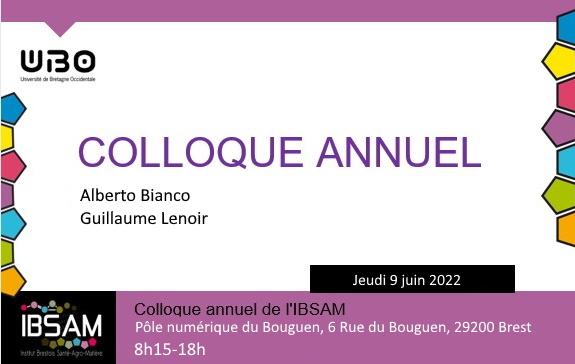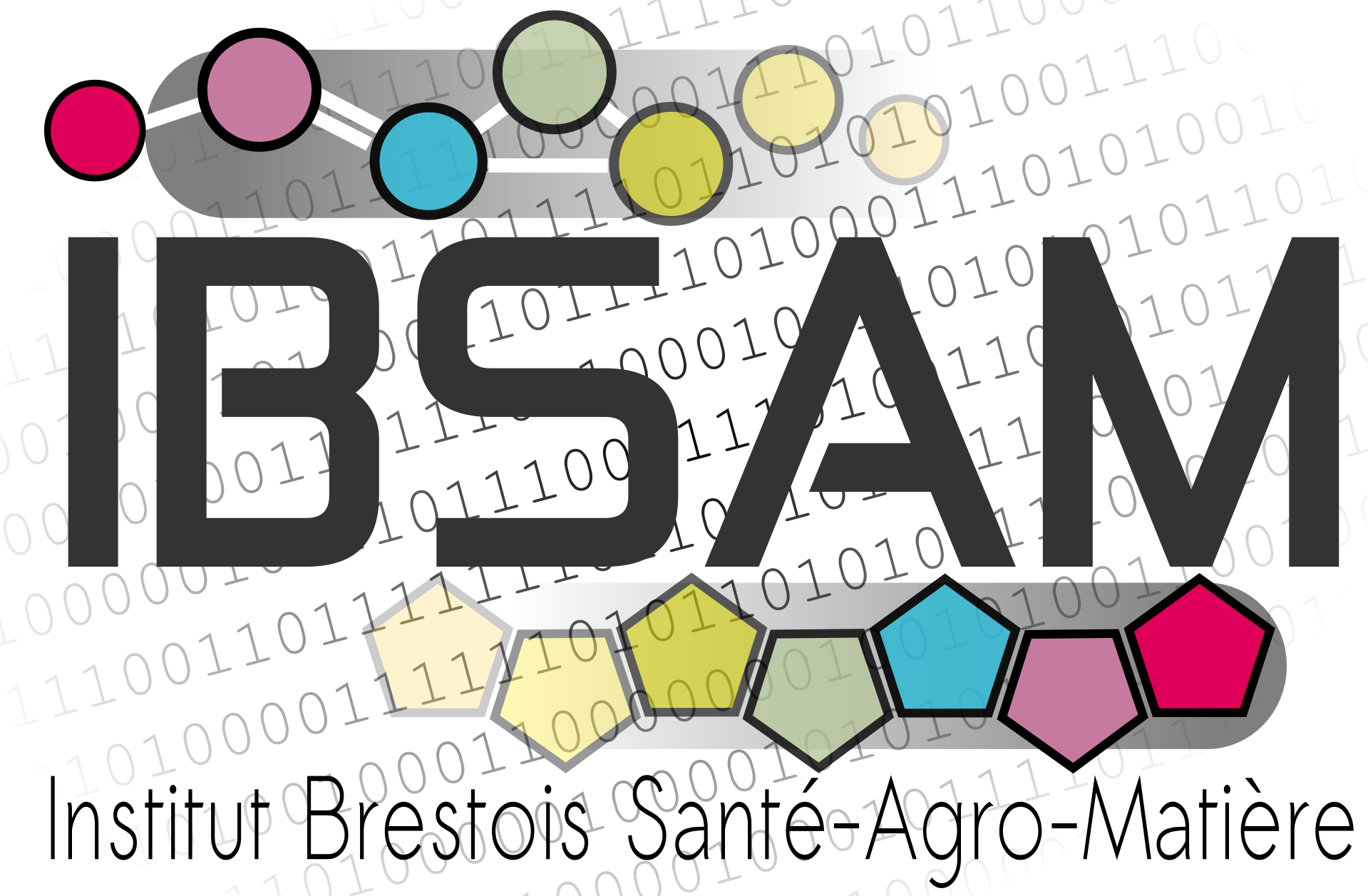
Nous aurons le plaisir d'accueillir Alberto Bianco et Guillaume Lenoir. Les doctorant et les étudiants de M2 vous présenterons leurs travaux.
Le programme complet est disponible par ce lien
IBSAM Colloque – Mardi 9 novembre Conférence
WHEN CARBON NANOMATERIALS MARRY BIOMEDICINE
Alberto Bianco
Institut de biologie moléculaire et cellulaire, IBMC, Strasbourg
Over the past two decades, carbon-based nanomaterials, including fullerenes, carbon nanotubes, graphene, graphene oxide, carbon dots and others, have largely invaded the biomedical fields. The possibility to chemically modify these materials has further expanded their applications and enhanced their biocompatibility. A certain number of diseases remain still incurable, or require treatments that often provoke heavy side-effects or are only palliatives. Nanotechnologies based on carbon nanomaterials offer new possibilities and lot of hopes to tackle these diseases. My team has concentrated the investigations on the design of new multifunctional systems based on carbon nanomaterials for therapeutic and imaging applications and combination thereof. In this context, chemistry plays a fundamental role as it allows to conceive and prepare new conjugates endowed of advanced functionalities and properties. We have designed new multifunctional carbon nanohybrids and explored different types of chemical reactions to synthesize covalent and supramolecular conjugates in a precise and controlled manner. These conjugates have been used for therapeutic and imaging studies. An important issue related to carbon nanomaterials is the assessment of their biocompatibility and biodegradability profiles. We found how to render carbon nanotubes and graphene safer by appropriate chemical modifications, and we have studied the impact of these materials on immune cells to determine the potential toxicity risks and to propose how to modulate them. My presentation will cover some examples of multifunctional carbon nanomaterials as drug delivery systems for cancer therapy. I will illustrate how it is possible to design targeted systems that are traceable, biodegradable and exploitable for multimodal therapies (e.g., combined photothermal, photodynamic or chemodynamic therapies), while minimizing their toxic effects.
IBSAM Colloque – Mardi 9 novembre Conférence
Molecular mechanism of transbilayer lipid transport catalyzed by eukaryotic lipid flippases
Guillaume Lenoir
Lipid flippases of the P4-ATPase family are eukaryotic transporters responsible for the active transverse movement of lipids from the exoplasmic (out) to the cytosolic (in) leaflet of cell membranes, at the expense of ATP hydrolysis. They are for instance responsible for the strong asymmetric distribution of phosphatidylserine (PtdSer) toward the cytosolic leaflet in resting cells, where PtdSer plays fundamental cell signaling roles. Most P4-ATPases form complexes with proteins from the Cdc50 family, this interaction being essential for correct folding, delivery to the proper subcellular localization and for function of the mature complex.
In the last years, for detailed biochemical analysis and subsequent mechanistic investigation of P4-ATPase-dependent lipid transport across membranes, we sought to implement a robust system for the coordinated overexpression in Saccharomyces cerevisiae and for the purification of a yeast P4-ATPase-Cdc50 complex, Drs2-Cdc50. We identified the C-and N-termini of Drs2 as autoinhibitory elements and recapitulated in vitro the requirement for the lipid phosphatidylinositol-4-phosphate to elicit activity. As part of a collaborative work with the laboratory of Poul Nissen (University of Aarhus, Denmark), we obtained cryo-EM structures of the Drs2-Cdc50 complex covering multiple intermediates of the enzyme cycle, thereby providing strong molecular grounds for a detailed understanding of lipid transport by P4-ATPase lipid flippases. Based on these biochemical and structural investigations, I will outline the mechanism by which the yeast Drs2-Cdc50 lipid flippase are regulated and how this mechanism may be extended to the disease-relevant human lipid flippase ATP8B1-CDC50A.


